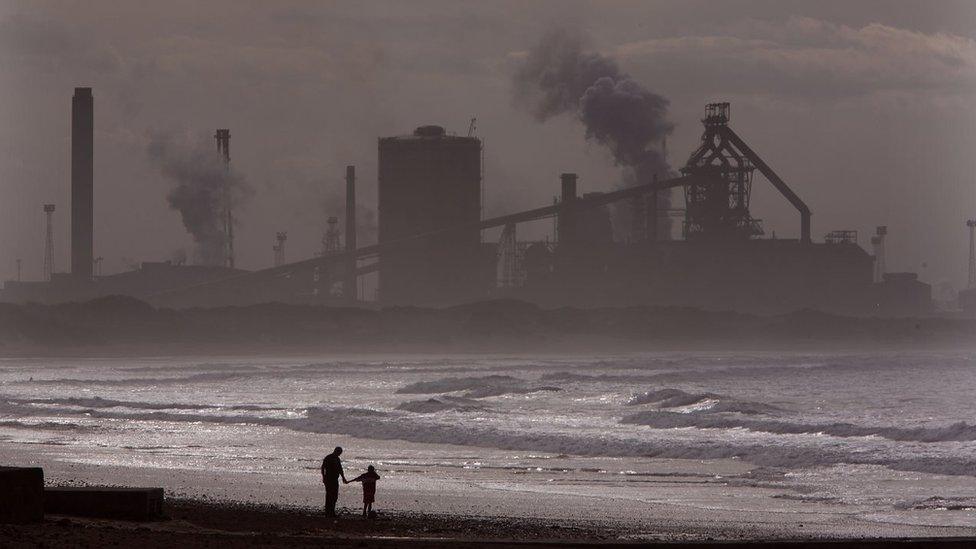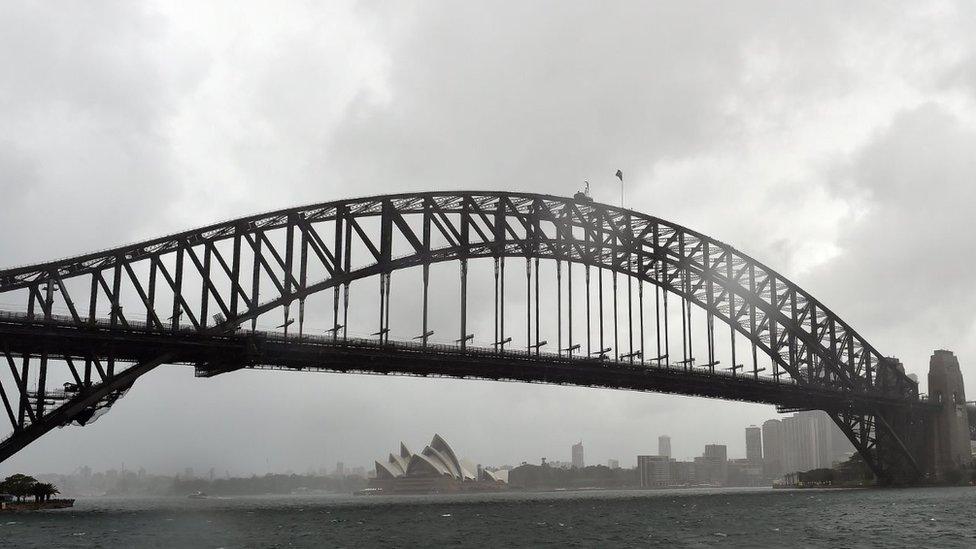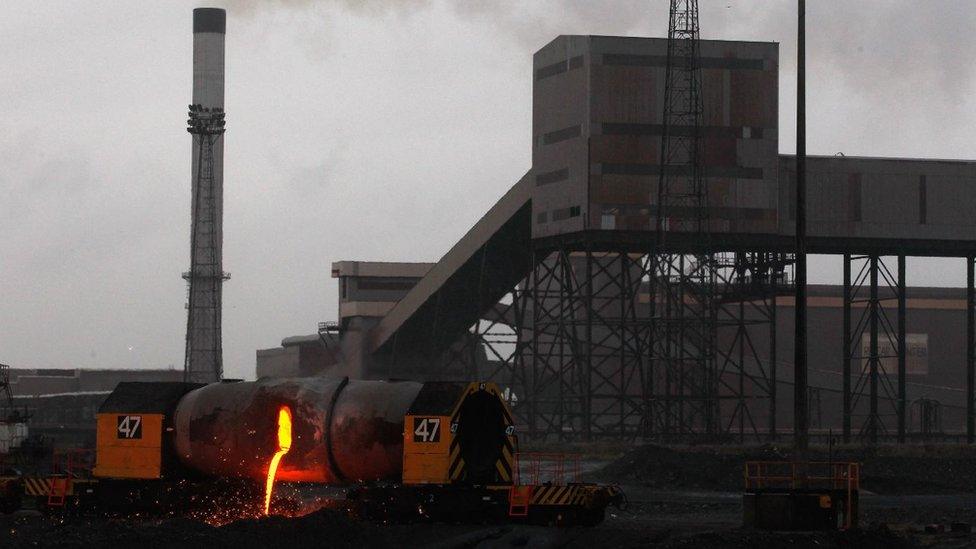How important is the Redcar steel plant?
- Published

The Redcar plant produced 3.4m tonnes of slab steel a year before closing in 2009
Steel production on Teesside has ceased for the second time in six years with the loss of about 1,700 jobs lost. How important are the works?
The Sydney Harbour Bridge is one of the most recognisable river crossings in the world.
It is a symbol of Australia and an icon of engineering - but it was made more than 10,000 miles away in a small Teesside town at the top of the North Yorkshire coast.
Now the Redcar steel works have been mothballed due to a slump in global steel prices blamed on the cheap of Chinese-made metal.

The Sydney Harbour bridge is made from Teesside steel
It is not the first time in recent history the Redcar site, which currently employs about 2,000 people plus many thousands more in the supply chain, has been closed.
About 1,700 jobs were lost when the plant's then owners, Indian firm Tata Steel, closed the works in 2010.
But two years later the furnace, the second largest in Europe, was re-lit and steel production started again under Thai-based Sahaviriya Steel Industries (SSI).
Trade unions have said a new loss of the steel works would be devastating for Teesside.
Paul Warren of the union Community said: "Staff are absolutely worried to death. People are putting their homes up for sale, looking at different jobs for next week, worried about holidays they've got booked, how they are going to pay bills, it's absolutely devastating."

A short history of the Redcar steel works

Steel has been made at the Redcar works since 1917
The steel works were founded in Redcar in 1917 by Dorman Long, the company which went on to design and build the Sydney Harbour bridge in the 1930s.
The plant then became a part of British Steel, the nationalised steel company formed in 1967.
In 1999, British Steel merged with Dutch company Hoogevens under the name Corus.
Eight years later the site was taken over by Indian firm Tata Steel, which produced about 3.4m tonnes each year at the plant.
Three years later 1,700 jobs were lost when the firm lost a large contract and the furnace was switched off.
In 2011 the site was taken over by Thai company Sahaviriya Steel Industries (SSI), which re-lit the furnace to much fanfare in 2012.

Historian Joan Heggie agrees the impact on Teesside is disastrous.
But she also believes loss of the works will have a much wider impact on British manufacturing.
"The impact of steel-making closing down on Teesside would be quite considerable," she said.
"It is an immense employer here. It's not a big area and does not have a huge population, so the affect of 2,000 directly-linked jobs going would be absolutely devastating.
"But, also, steel and iron are a basic commodity of most manufacturing processes. To not have it locally sourced within the UK and to be constantly requiring it to be imported makes the UK a weaker economic force."
She said the workers will suffer even though they are not to blame.
She said: "It's not due to the worker's inability to make good steel or the workforce not reaching productivity targets, it's about markets at the moment driven by the global price of steel dropping so hard it's affecting all steel plants.
"SSI is a young plant having to invest a huge amount of money and, unfortunately, it's hitting it very hard."

Some families in Redcar have worked in the steel industry for generations
But Ms Heggie said she remains optimistic about the future and the people of Teesside will show strength in the face of adversity.
"This area has been resilient. Yes, it has had to absorb huge industrial blows where manufacturing sites and industries have shrunk and closed, but I'm a huge believer in the resilience of the people of this area.
"They have bounced back time and time again and I feel sure something will emerge from this, like it did in 2012.
"Nobody expected the blast furnace to reopen but it did in 2012.
"We are a long way away from that yet, let's not get too depressed."
But ultimately, if production does not start again in the near future, workers may be forced to move away, Ms Heggie admitted.
"The workforce will have to move away and take their skills to other areas. They cannot wait for 10 years for something good to come."
- Published24 September 2015

- Published23 September 2015

- Published20 September 2015

- Published18 September 2015
